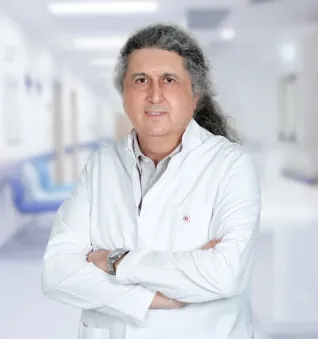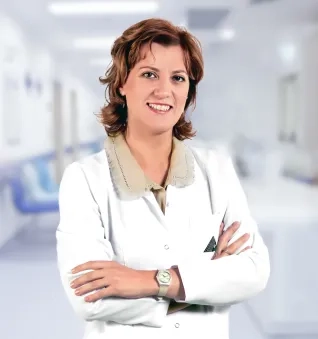Alo Yeditepe
Alo Yeditepe
What is Golden Needle?, How is Golden Needle Treatment Done?
What is Gold Needle (Microneedle Raffifrequency) Treatment?
Gold needle (microneedle raffifrequency) treatment is a method used for skin rejuvenation and tightening. This treatment is generally used to help the skin gain a firmer and younger appearance. Microneedling is the process of thin needles penetrating the skin and creating microholes. Radiofrequency energy is then delivered to these holes, reaching the lower layers of the skin, tightening it and stimulating collagen production. This process can reduce skin wrinkles, increase skin elasticity, and improve overall skin texture.
Microneedle radiofrequency treatment is generally considered a non-surgical option, but it should be recommended by the doctor, taking into account factors such as the person's skin type, health status and treatment expectations. Mild discomfort may be felt during the procedure and the healing process may vary from person to person. It is important to consult with a qualified healthcare professional before and after any cosmetic procedure.
When to Use Gold Needle (Rafifrequency with Microneedle) Treatment?
In this system, radiofrequency energy is transmitted to the lower layers of the skin with the help of gold-coated microneedles. This transmitted energy heats the tissues. This energy enables the production of new collagen in the tissues under the skin. Thus, skin renewal, repair of damaged tissues, and the formation of a bright and taut skin are observed.
Microneedle radiofrequency (MRF) treatment is a method used in skin rejuvenation and tightening. This treatment is generally used in the following areas.
Gold Needle Facial Area Usage
Reducing Wrinkles
Microneedle radiofrequency therapy can reduce the appearance of fine lines and wrinkles on the face by increasing collagen production in the lower layers of the skin.
Skin Tightening
Radiofrequency energy can increase skin elasticity and prevent sagging.
Neck and Décolleté Area
Correction of neck lines: The treatment can help reduce fine lines and wrinkles on the neck.
Skin rejuvenation in the décolleté area: It can be used to improve and tighten skin texture.
Use of Gold Needle Around the Eyes
Reducing under-eye bags and wrinkles
Microneedle radiofrequency can be applied to alleviate problems around the eyes.
Use of Gold Needle in Hand and Arm Areas
Reducing Signs of Aging in Hands
It can correct wrinkles and signs of aging in the hands by increasing collagen production.
Use of Gold Needle for Acne and Skin Blemishes
Healing Acne Scars and Skin Blemishes
Microneedle radiofrequency can lighten acne scars and skin blemishes by promoting skin restructuring. In addition, this method can be used to dissolve the double chin (combined with lipolytic mesotherapy), tighten pores, and cracks that occur due to various reasons such as pregnancy, weight gain and loss.
These areas of use are the areas where microneedle radiofrequency therapy is widely preferred. However, before and after treatment should be recommended by an expert healthcare professional, taking into account the person's skin type, health condition and treatment expectations. This process is applied for an average of 3-5 sessions, once a month.
How is Golden Needle (Needle Radiofrequency) Applied?
Before the needle radiofrequency system application, the skin is cleaned and anesthesia is performed with topical anesthetic creams to minimize pain. A personalized cap is attached to the system and appropriate doses are determined. The application takes approximately 30 minutes. The redness that occurs after the application will disappear within the following 24 hours - 72 hours.
What Should Be Considered After Gold Needle (Microneedle Raffifrequency) Treatment?
After microneedle radiofrequency (MRF) treatment, there are some important points to consider to optimize the healing process and prevent possible complications. However, specific instructions may vary depending on your personal health condition and the recommendations of the treating professional. Apart from this, it is possible to list the things to consider after the procedure as follows.
Facial Cleansing
The face should not be washed on the day of golden needle treatment. Afterwards, the treatment area should be kept clean, but care should be taken not to overdo it. The face should be cleaned gently and harsh scrubbing movements should be avoided.
Make-up
Make-up should not be applied after the session. It is best to avoid wearing make-up for a while without your physician’s approval. It is important to rest your skin during the healing process.
Sun Protection
Your skin may be more sensitive after treatment. Therefore, to protect against the harmful effects of the sun, it is useful to avoid the sun or use sunscreen, especially on the day of the treatment.
Skin care products
After application, slight redness, swelling, dryness and tightness of the skin may occur. Skin moisturizing creams and antibiotic creams should be applied for 3 days after the session. Products containing alcohol, corrosive substances and other products that may irritate the skin should not be used. There may be tiny crusts on the skin after the application, which will disappear spontaneously 3-4 days after the session.
Hot and Cold Applications
Your skin will usually be sensitive after the procedure. Avoid extremely hot practices such as hot baths and saunas. Also avoid extreme cold applications such as ice packs.
Exercise
Avoid excessive exercise and stay away from heavy exercises for the time recommended by your physician.
Healing Process Follow-up
In case of any unexpected effects or problems, contact your healthcare professional immediately. In addition to these recommendations, the recovery process after treatment is personal and may vary depending on your individual situation.
Strictly follow the instructions given by the treating healthcare professional and contact your physician immediately if you have any concerns.
This content was prepared by Yeditepe University Hospitals Medical Editorial Board.
”
See Also
- What is Shingles? Shingles Symptoms and Treatment
- Does Sunburn Cause Skin Cancer?
- How Often Should You Take a Shower?
- Skin Rejuvenation With BBL Laser
- What Causes Skin Blemishes? How to Get Rid of Skin Blemishes?
- BBL Laser: What is Broadband Light Therapy?
- What is Fractional Carbondioxyde Laser?
- BBL Rosacea Treatment
- What Is Rose Disease? Symptoms and Treatment of Rose Disease
- Sunburns Can Leave Permanent Damage
- Causes of Hair Loss
- Itching can be a Symptom of Another Disease
- Scabies Disease
- Ehlers-Danlos Syndrome
- Do Not Underestimate Itching!
- Intense Stress Makes Hair Ringworm
- Urticaria Decreases the Quality of Life
- 6 Ways to Protect Your Skin in Winter
- Pollen is Now Seen Outside of Seasonal Changes
- How Should We Protect Our Skin During the Summer Season?
- 15 Ways to Protect Skin During Winter
- Skin Microbiota May Affect Immunity!
- Acne and Diet
- Sunburn
- How to Protect Yourself from Sunburn?
Alo Yeditepe





